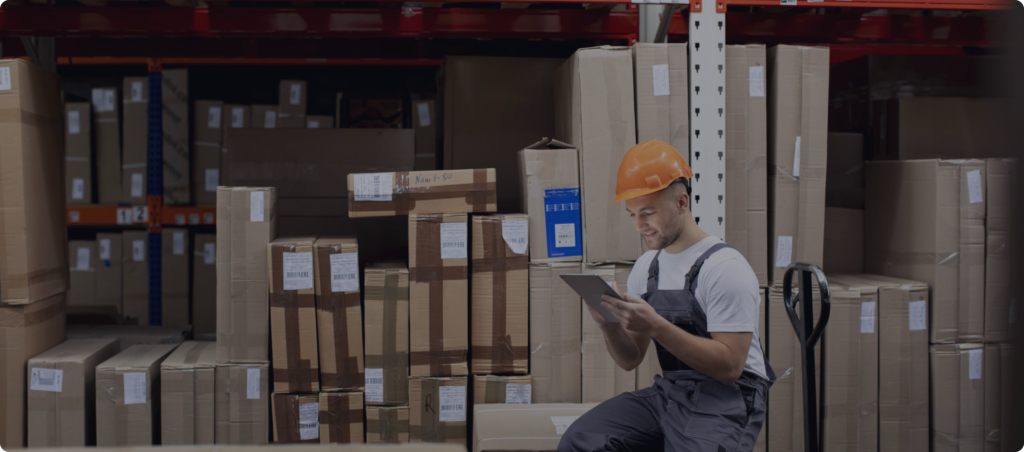Warehouse automation has been evolving rapidly as a response to increasing eCommerce, changing customer requirements, and evolving market demands. As more customers move online to fulfill purchases, warehouses, micro fulfillment centers, and third-party logistics (3PLs) need to scale capabilities, enhance flexibility, heighten efficiencies, and reduce supply chain costs while ensuring lightning-fast deliveries.
eCommerce sellers are actively seeking innovative ways to leverage automation, unmanned systems, and intelligence to make their businesses more responsive to market demands and fulfill customer demands faster.
Why human-in-the-loop automation (HITL) automation?
The warehouse of today is also evolving at a fast pace. The average warehouse capacity utilization among manufacturers is about 66%. The demand for warehouse space and the associated increase in space costs are causing distribution centers to grow vertically. Reports show that the vertical heights of distribution centers are also going up. The industrial market is moving toward a 36’ clear height standard moving up from the previous 32’.
Challenges in labor availability also continue to grow larger every year as the pool of labor to perform warehouse-related work shrinks. However, with the rise of same-day and one-day deliveries, the demand for operations to do more in less time has steadily increased. Automation systems including robotics, automated storage and retrieval systems (AS/RS), conveyor systems, sortation systems, etc. have also now become an indispensable part of the warehouse automation ecosystem. This segment now holds a dominant market position within warehouse automation, with more than a 70.4% share in 2023.
Today, warehouse automation solutions and autonomous robots are helping businesses sharpen their performance. While these technologies potentially transform fulfillment operations, they need more than just a reliable power supply to ensure accelerated, 24/7 operations. This is where edge using Human in loop (HITL) automation comes into play.
What is Human in loop automation?
Human in the loop is an example of automation and human collaboration at its best. This type of automation allows warehouse automation systems to incorporate human decision-making when needed and change the direction of automated processes.
With human-in-the-loop automation, warehouses can leverage the optimum mix of labor and capital. It allows businesses to embed automation efficiencies into their workflows and processes by allowing human intervention to influence the direction of automation as per business demands.
The development of human-in-the-loop (HITL) automation allows warehouses to automate repetitive tasks that were “almost automatable” but too complex for a machine or robotic system.
The benefits of Human-in-the-loop warehouse automation
Human-in-the-loop automation solves many pressing challenges faced by today’s warehouses. (HITL) automation emerges as a winning formula for modern warehouses as it allows the power of human judgment to influence the process to drive business outcomes and address market requirements. Here is how:
Handle exceptions
Warehouses can handle exceptions or unforeseen circumstances that emerge in warehouses. Automation systems that allow humans to assess situations like damaged packages, wrongly labeled items, kitting processes, etc. ensure smoother operations.
It allows warehouse automation systems to navigate tricky tasks such as navigating congested warehouse floors or identifying the most efficient way to pick and package a fragile item through an automated packaging system.
Ease complex quality checks
Human intervention remains invaluable for complex quality checks. This form of automation alleviates these concerns and delivers invaluable support to automation systems as product categories and specifications become abundant.
HITL automation allows warehouses to allow human engagement to achieve optimal efficiencies and error reduction in warehouse automation.
Drive operational scalability
HITL automation in warehouses also helps businesses to increase growth and margins while engaging more meaningfully with shoppers to enhance their satisfaction and loyalty.
HTIL automation also enables the optimized automation of smaller warehouse spaces such as micro-fulfillment centers, dark stores, and 3PLs that are much smaller order fulfillment units, strategically positioned near urban centers.
These automation solutions are pivotal in ensuring efficient packaging and order fulfillment processes that enable one-day or same-day deliveries and drive business success.
HTIL automation for MFCs
HTIL automation solutions allow businesses to rethink traditional warehouse automation and make it more suited for the MFC environment. Automated warehouse packaging and order-fulfillment solutions for MFC using cobots, picking and packaging systems, etc. with HTIL help in achieving optimal efficiency. Automated robots handle repetitive tasks like picking and sorting and use humans to take care of exceptions and complex decision-making like where to best store fragile items for ease of pick up.
HTIL also ensures greater overall accuracy in order fulfillment as HTIL combines precise automation with human oversight. This form of automation frees workers from mundane tasks, ensures optimized labor utilization, and empowers them to complete tasks more efficiently and accurately.
To sum up
HITL automation addresses the edge cases in the warehouse workflows that require human intelligence. This is simply because reality is often far more complicated, no matter how the automated system is designed with possible outcomes.
Human-in-the-loop automation provides invaluable support when algorithms do not understand the input, are incapable of completing certain tasks, navigate blind spots, and help machines and technology draw more accurate conclusions.
With this technology, warehouses can optimize operations and maximize throughput. That apart, it offers a great way to foster drive job satisfaction and employee engagement by ensuring that warehouse jobs evolve and require more technical thinking and problem-solving.
Human in-loop automation can protect the mental and physical health of employees by removing heavy, manual labor and create an attractive workplace. It drives efficiencies and insights that can be used to reorchestrate processes and fulfill more orders, increase operational productivity, and also reclaim distribution space for more product storage.
Greater accuracy, efficiency, and faster order fulfillment and the capacity to scale automation as per business requirements ultimately creating a smarter, more efficient, and more successful warehouse environment.
Connect with us to see how our automation solutions can transform warehouse and MFC operations and productivity!


